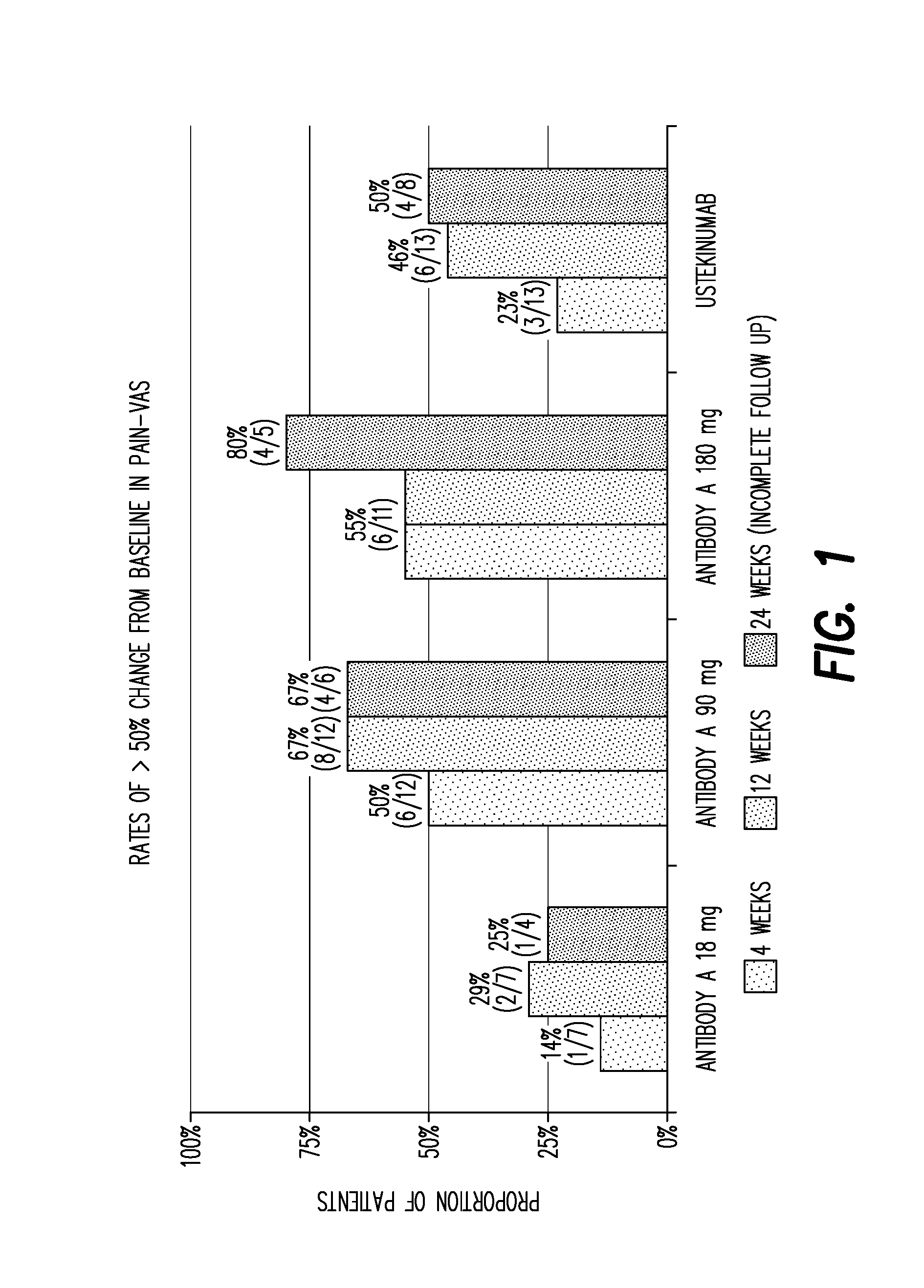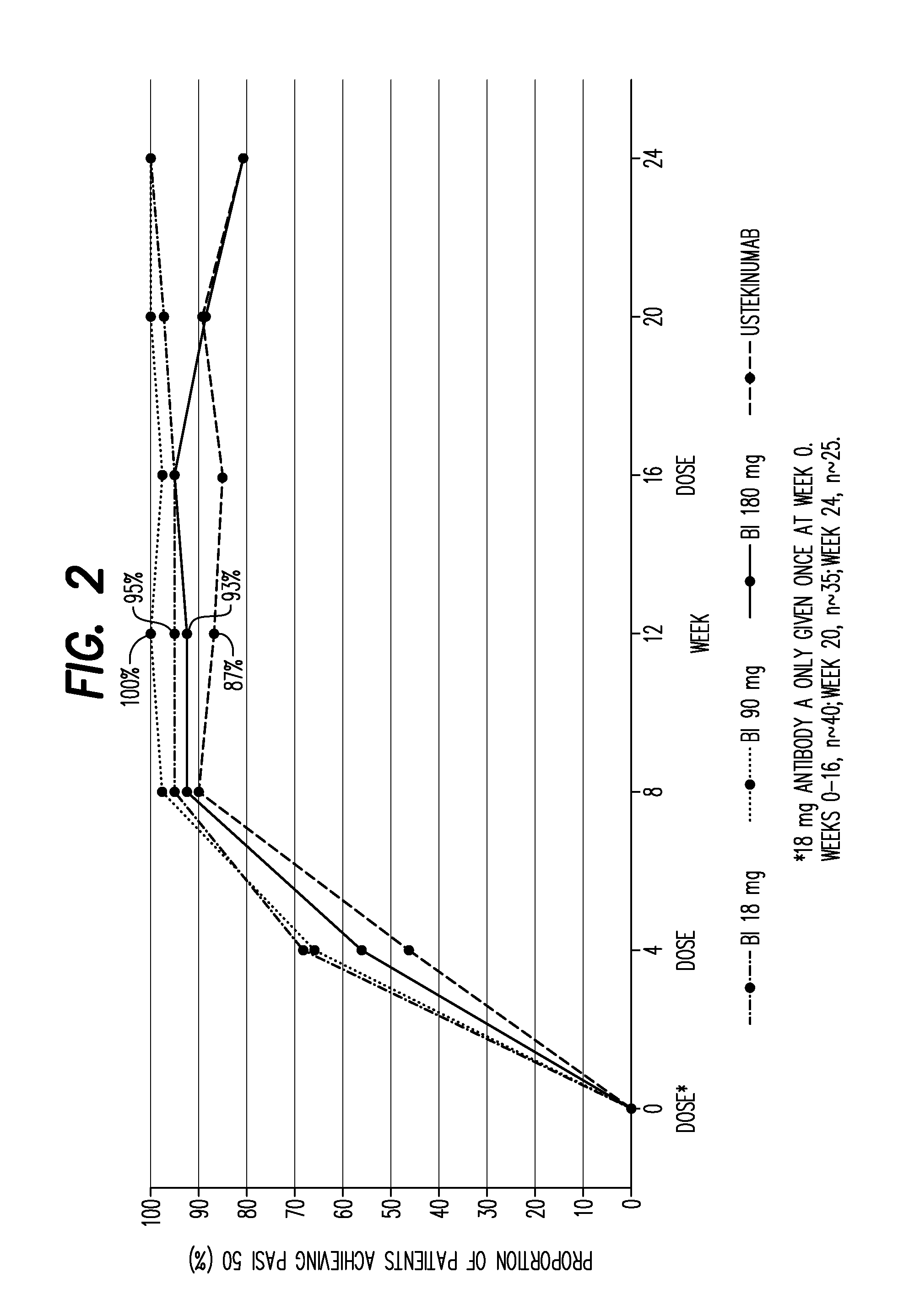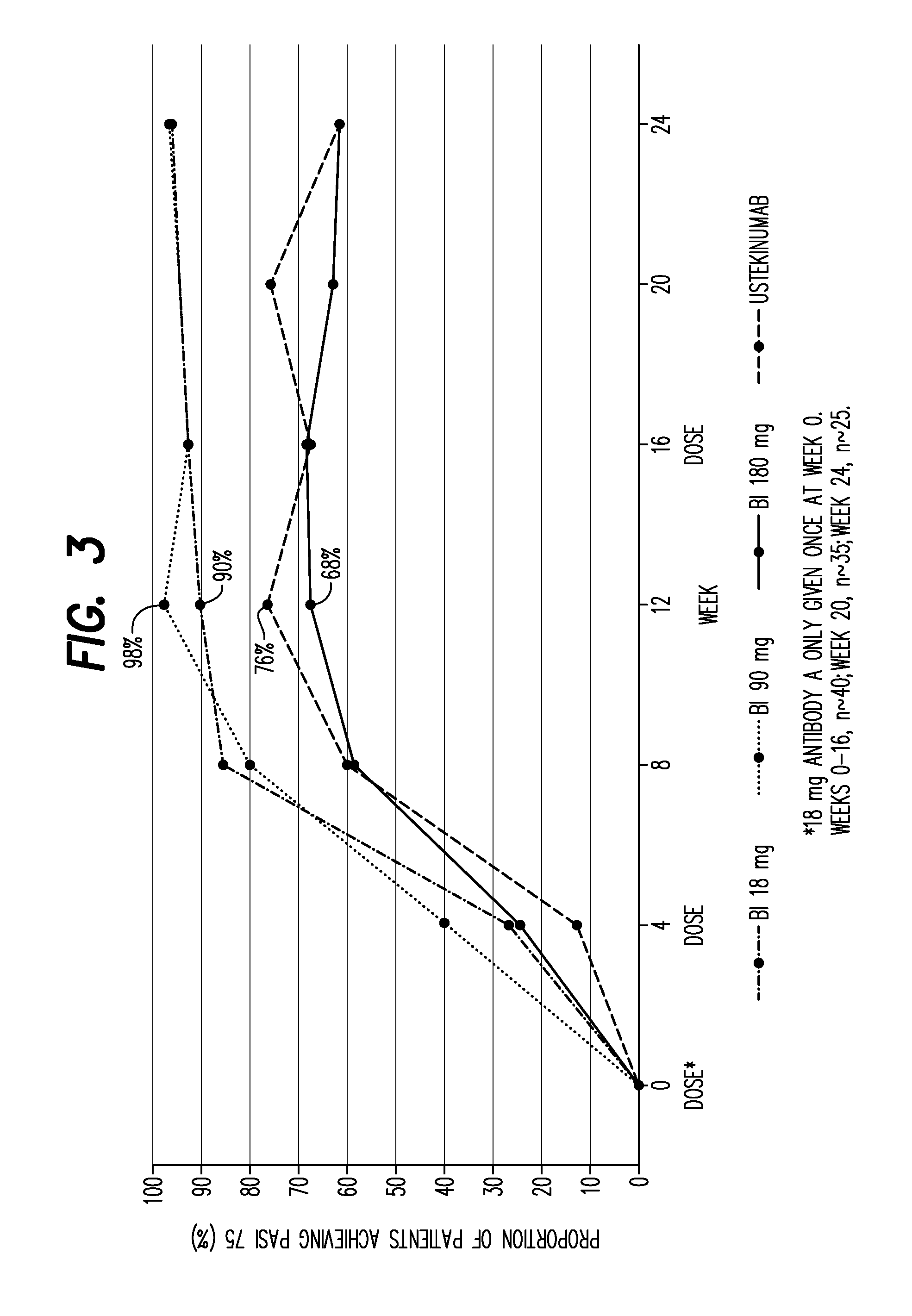Methods of treating inflammatory diseases
a technology of inflammatory diseases and treatment methods, applied in the field of treatment methods of inflammatory diseases, can solve problems such as pain and disability, and achieve the effects of reducing signs and symptoms, improving physical function, and inhibiting the progression of structural damag
- Summary
- Abstract
- Description
- Claims
- Application Information
AI Technical Summary
Benefits of technology
Problems solved by technology
Method used
Image
Examples
example 1
Clinical Studies
[0345]The results shown in Examples 1 a, 1b and 1c are derived from the same clinical study.
example 1a
Study
[0346]This study assessed the efficacy and safety of Antibody A vs ustekinumab in patients with moderate-to-severe plaque psoriasis.
[0347]166 patients were randomly assigned to one of three dose regimens of Antibody A (18 mg single injection; 90 or 180 mg at weeks 0 and 4) or ustekinumab (45 or 90 mg). PASI (Psoriasis Area and Severity Index), sPGA (Static Physician Global Assessment) and safety parameters were assessed. Primary endpoint was achievement of PASI 90 (achievement of ≧90% reduction from baseline PASI score) at week 12, with primary analysis comparing the two highest doses of Antibody A (pooled) with ustekinumab.
[0348]The primary analysis showed Antibody A to be superior to ustekinumab (PASI 90 response rate of 77.1% for Antibody A vs 40% for ustekinumab [p<0.0001]). sPGA scores of 0 (clear) or 1 (almost clear) were achieved by 90.4% of Antibody A patients compared with 67.5% of ustekinumab patients. Complete clearing of lesions (PASI 100) was achieved in 45.8% of A...
example 1b
Study
[0350]Objectives: The efficacy and safety of the selective IL-23p19 antagonist monoclonal antibody Antibody A were assessed and compared with ustekinumab in patients with moderate-to-severe plaque psoriasis (including those with and without concurrent psoriatic arthritis (PsA)).
[0351]Methods: In this Phase 2 study, 166 patients were randomly assigned (1:1:1:1 ratio) to receive subcutaneous injections of one of three dose regimens of Antibody A (18 mg single dose at week 0; 90 or 180 mg at weeks 0, 4 and 16) or ustekinumab (45 or 90 mg at weeks 0, 4 and 16). Skin lesions were assessed using the Psoriasis Area and Severity Index (PASI) with the primary endpoint of PASI 90 (90% improvement from baseline) at 12 weeks. In patients who had concurrent PsA (either diagnosed by rheumatologist or suspected), the pain was assessed using the Visual Analogue Scale (pain-VAS) at baseline and at weeks 4, 12 and 24. In this interim analysis, all patients had completed the week 12 visit; there ...
PUM
| Property | Measurement | Unit |
|---|---|---|
| pH | aaaaa | aaaaa |
| time | aaaaa | aaaaa |
| weight | aaaaa | aaaaa |
Abstract
Description
Claims
Application Information
 Login to View More
Login to View More - R&D
- Intellectual Property
- Life Sciences
- Materials
- Tech Scout
- Unparalleled Data Quality
- Higher Quality Content
- 60% Fewer Hallucinations
Browse by: Latest US Patents, China's latest patents, Technical Efficacy Thesaurus, Application Domain, Technology Topic, Popular Technical Reports.
© 2025 PatSnap. All rights reserved.Legal|Privacy policy|Modern Slavery Act Transparency Statement|Sitemap|About US| Contact US: help@patsnap.com



